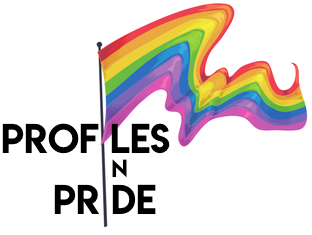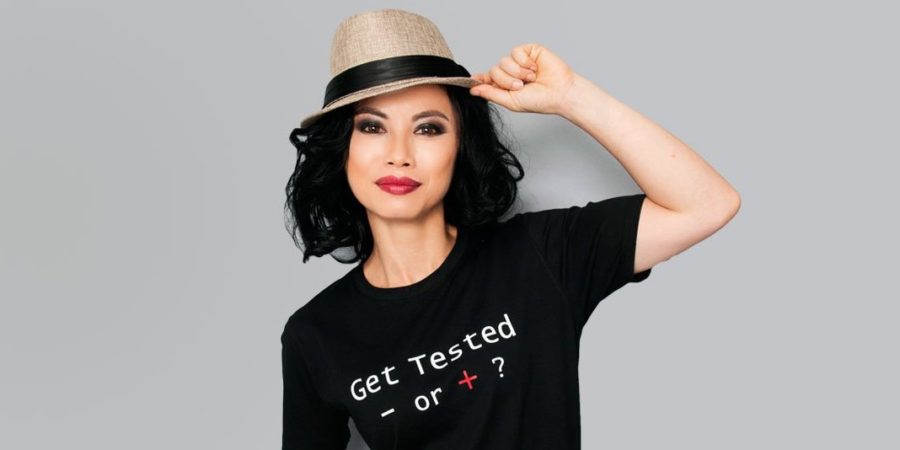Amazin LeThi was born in Saigon and left at an orphanage by her mother. She was adopted by a white family and spent her childhood in Australia, and as the only Asian person in her family, she already felt different.
But once she realized she was not straight (or a “rainbow person,” as she likes to say) she felt even more out of place. Her childhood in Australia was painful; she faced severe amounts of bullying for not looking or acting like everyone else. On top of it, she saw no representation in mainstream media of Asian people like herself, let alone queer Asian people. She felt alone.
At the unusually young age of 6, LeThi turned to bodybuilding to help increase her confidence and inner and outer strength. She started at home, then moved to a gym once she grew older. While she found a sense of belonging, she also faced intense amounts of sexism and homophobia in that environment, and she again noticed a lack of other Asian faces.
After spending her adolescence and some of her teenage years in Australia, LeThi moved overseas and pursued a successful career in the entertainment and health and fitness industry. But she struggled and fell in with a bad crowd — she ended up around drug addicts, experienced homelessness, and constantly felt suicidal. In a homeless shelter, LeThi hit rock bottom. However, she realized she had so much more to do in life, so she pulled herself out of it and threw herself back into sports.
LeThi says sports saved her, so she became a fierce activist for inclusion in sports, in addition to fighting to increase representation for the Asian community. She became the first Asian Athlete Ally Ambassador, and she has been involved in several White House equality initiatives. She also started The Asian Athletes Alliance, which focuses on inclusion in sports for the Asian community. Her list of accolades and accomplishments is nearly endless. LeThi also did a video for the It Gets Better Project.
LeThi frequently travels the world to speak about Asian representation and sports equality. This year, she launched her own “sports equality tour,” where she’s participating in numerous events to work to accelerate acceptance of LGBTQ Asian athletes.
This is LeThi’s story of overcoming bullying, being saved by sports, and working to increase visibility and acceptance of LGBTQ Asians and athletes.
Profiles in Pride: How do you identify?
Amazin LeThi: Millennials understand this very well; they just say, “I am whatever I am.” What that is, is whatever I am. I label myself as a rainbow person, because that’s anything under the rainbow. Actually, in the Vietnamese community, we use “rainbow” and “queer” a lot because I find LGBTQIA or whatever that is to be very rigid, and not everyone fits within those letters of the alphabet. That’s how I identify. Most of the time I say, “Why do I need to label myself? This is just me.” I’m a rainbow person. I like it; it’s easier to say because the LGBTQ acronym is changing all the time!
PIP: When did you realize you were “rainbow,” and what was coming out like for you?
AL: I always find this question an interesting conversation, of coming out, because straight people don’t have to go through that process. No one questions a straight person’s identity. But when people find you’re from the rainbow community, they really need to know, “What was that coming out?” I think how wonderful it would be if we could get to the point where we could just be. Because straight people can just be in that space, and nobody questions them.
Also for the Asian community, we see the coming out as a very Western ideology. Because in the Asian community, as soon as you’re born it’s all about coming home, what you can do for your family, that narrative of conforming, having the right job — mainly like being a doctor or lawyer — and which university do you go to, Harvard or Yale? And who’s going to look after your parents in old age? Asian people are always working toward that, and that actually pushes us not to come out, but keeps us in the closet from not being our authentic self.
Being Asian, I suffered a terrible amount of constant bullying as a child for looking physically different, but also feeling different inside and not being able to acknowledge or identify what that difference was. Kids could see the difference. I always knew. I didn’t have some big coming out story, like a lot of people have. I’ve always just been myself.
Even as a teenager, I did LGBTQ work in television, radio, and in print, but I never came out. I was like, “This is me, and this is how I live my life.” I lived a very different life and I always lived it authentically. I think you should just be able to be who you are without having to do this big whole coming out. When people question people’s sexuality and say it was something that was chosen, no, you were born this way, because I know I was born how I am and feel the way I feel in terms of the person I love or am attracted to.
I think it’s important sharing these different stories, because they say many more millennials than older generations now don’t identify as straight. We did not have the names genderfluid or nonbinary or genderqueer decades ago. For many millennials I meet, they sometimes don’t even have a coming out; it’s like, “This is how I am.”
PIP: I hope I get to a point where I don’t feel the need to ask about coming out stories. I still ask because I think it helps inspire people who are struggling to come out themselves.
AL: Absolutely, and I understand that. Some people have this big coming out process and sit their parents or community and say, “I’m gay, that’s who I am.” I never did that, I did things different by just doing things in the gay community. As a teenager, I went into the entertainment industry so I became quite public. Interestingly enough, they never asked about my sexuality; they just assumed since I was doing gay press that I wasn’t straight.
That was probably also my own process as well, being able to just have mirror images of people within the Asian community that identify as rainbow, who can share their stories, because the Asian community was very unrepresented. We’re part of this invisible minority myth that’s been perpetrated, and it’s only in recent times that you’re starting to see LGBTQ Asian characters on TV.
You did not see that a year or so ago, which then makes your blog very important, because that journey of an Asian person finding out their sexuality or gender identity — they need someone who looks exactly like them who have gone through a very similar experience.
PIP: Absolutely. I know you struggled in your earlier years; could you discuss those challenges?
AL: I had a very difficult childhood because I’m a transracial adoptee and I was brought up in an all-white background, so I had these multiple layers of identity I was trying to navigate. One was being Asian in an all-white community and what that meant growing up without my own identity. Two, knowing that I was from the LGBTQ community and not seeing myself represented anywhere and not meeting Asian queer people and not having a word for who I was. Then I faced a terrible amount of bullying and racism as a kid, because it was just so noticeable that I was different.
A lot of international adoptees, and a lot of kids who have this experience growing up in all white backgrounds, have this other layer if they’re gay on top of that. I had very low self-worth as a child. I hated being Asian, and I remember as a kid just wanting to wash away the Asian. I’d scrub my body and arms for hours just hoping that the difference I felt inside and externally would somehow go away; that one day I’d be able to blend into society.
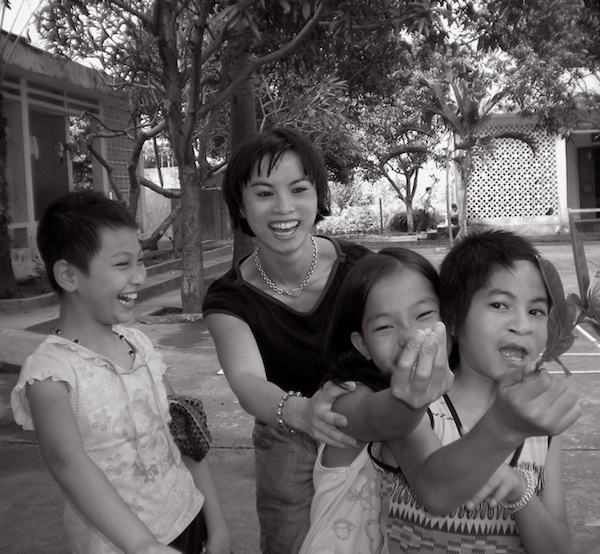
I think that’s always a struggle for LGBTQ youth of wanting to fit in and wanting to be a part of a community. Particularly when you look at youth in very rural areas, or places with Christian backgrounds or very anti-LGBTQ backgrounds, where they just don’t have any exposure to the community.
For me, I’ve always been very athletic, so I moved into sports. Sports saved me; it’s where I could find somewhat of a community where it was based on my ability as an athlete. I was very good at sports, but I also noticed through sports that again I was the only Asian kid on the sporting team, so the racism continued. Then I went out of team sports because I felt so uncomfortable in that space. I went into individual sports, and then I moved into bodybuilding at age 6. It was also a way to gain strength, because I was being bullied so much that I wanted to find a way to stand up to bullies and get some self-confidence.
PIP: You started bodybuilding at 6 years old!?
AL: Yes, it was highly unusual for an Asian girl at 6 to go into bodybuilding. But I had found a haven. It was somewhere I could just get lost. It gave me confidence, I felt my body changing, I was able to stand up to the bullies. But I learned very quickly in sports what it was like for a woman, and what it was like for a woman of color.
I just started off at home doing press-ups and sit-ups. There was a gym down the road that I eventually went to, but I had no idea how homophobic and transphobic and sexist and heteronormative the gym and bodybuilding community was. When I stepped into that community, it was dominated by an older male community, predominantly white, and it moved from racism to sexism.
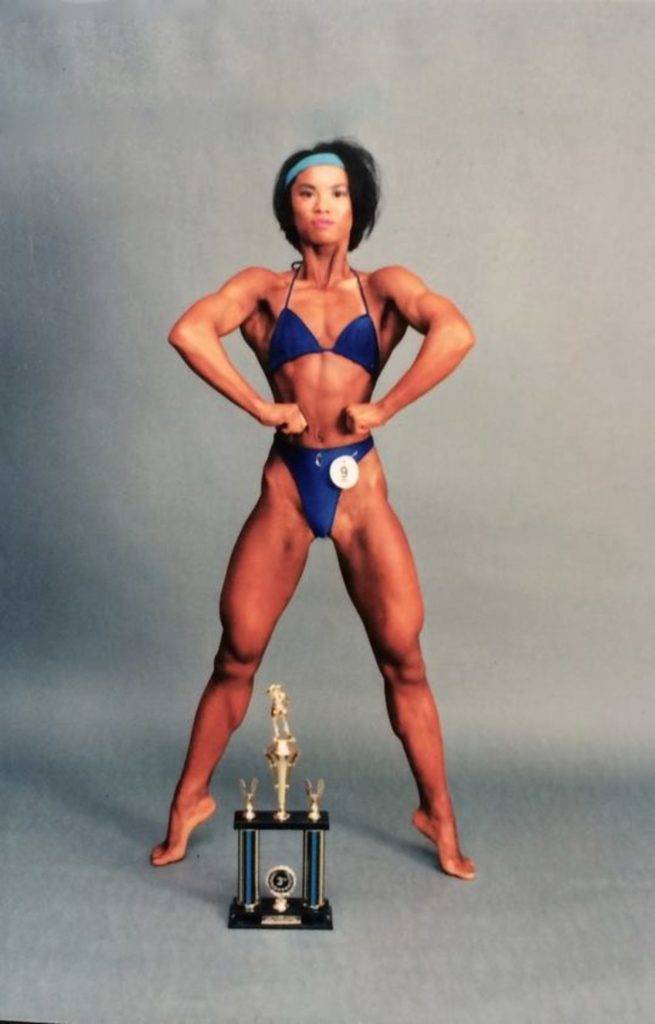
This kind of locker room talk from this current administration is real, and it’s the reason why when you go into gyms now, you see all the women on cardio and not on the gym floor, because it’s very difficult for women to navigate that all-masculine space. Then it kind of moved into sexism, and I was still trying to figure out my sexuality and who I was and where I fit in.
When I reached my teenage years I ended up working in the entertainment industry as an actress and a producer and director. Then I saw how the media portrayed Asian people, and the stereotypes. There’s the oversexualization of Asian women and the desexualization of Asian men, which plays out in the LGBTQ community as well. I suffered sexism and homophobia too.
Back then, you didn’t have LGBTQ anti-discrimination policies, you didn’t have pride networks or GLAAD-type organizations you see now. You just had to kind of suffer in silence. As a young adult, through very difficult circumstances, I ended up in a very bad situation around drugs, and with people taking really hard drugs, and I fell on hard times.
PIP: I know you also experienced homelessness; what was that like?
AL: A lot of people live at that border of poverty, or one paycheck away from poverty. I was struggling with mental health and depression. In my childhood and teenage years, I had a very high rate of mental health and contemplation of suicide, and I had all these different layers I was dealing with.
When I was homeless and in and out of shelters, it became my worst point. I was contemplating suicide practically every single day, every second of every day. I was living in poverty and in debt. I was very hopeless, and I’d never hit a point in life where I felt like my whole life had spiraled out of control, and I ended up in this black hole.
I remember one day in the shelter when I just couldn’t get up. I think I slept 48 hours; I was just so hopeless, and I was crying in a corner and wondering what had become of my life. In that moment, I only really had two ways to go: further down or up. I really had to find a reason why I wanted to live.
I just remember crying for 24 hours, really thinking what’s a reason why I want to live? What’s the point of my life when I have absolutely nothing? I tried to school myself of that, and I realized what so many other LGBTQ youth go through. Even now, my eyes well up with tears knowing the heartache and trauma that I went through, and that journey.
PIP: How did you get out of that rock bottom moment and get the motivation to keep on going?
AL: When I was a child, because of what I went through, I always wanted to make an impact in the world. I never knew what that impact would be, and I always wanted to travel the world. When I hit my lowest point, I went back to that moment of what my ‘why’ was. I wanted to make an impact in this world. I had so much more to do in my life. I wasn’t ready to be done yet.
I know what so many LGBTQ youth are going through. When I was a child, a lot of LGBTQ youth got picked on in different ways — through their family, at school, their community, and the systems. I remember one poignant moment as a child, I must have been 7 or 8, when my teacher made me stand up in the classroom and said, “This is what failure looks like, and most of her life, she’ll be a person who will fail,” and made all the kids look at me and laugh.
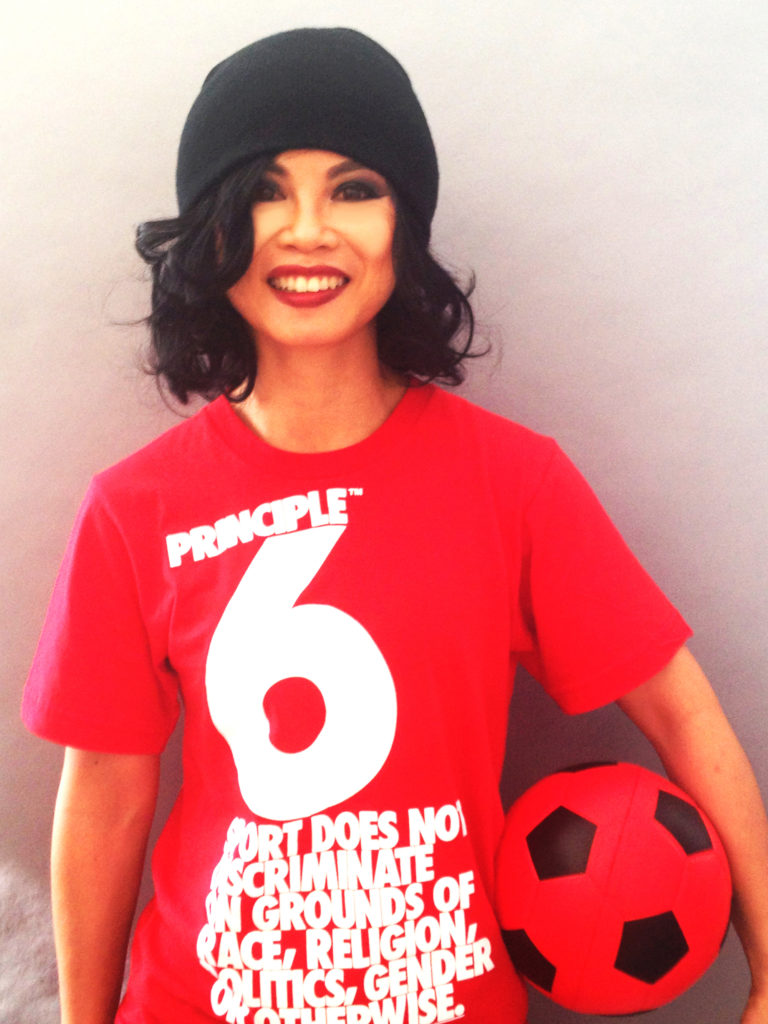
To this day, I don’t know why she said it, but she said I’d make a potato peeler, if that, and she threw the backboard eraser at my head. I remember thinking, “I’ll never let someone make me feel this humiliated again my entire life.” I never want any kid to go through this kind of thing. I thought to myself in that moment, I can’t cry because everyone is laughing and pointing at me. I remember sitting down and thinking, I feel so worthless.
I never had anyone who supported my dreams as a child. I never had any mentors either that I knew of. I used to spend a lot of time in the library reading books, reading about other people who were successful, and they basically became my mentors. Other people who had struggled in life.
That’s why I share my story, because I realize how many LGBTQ youth struggle. Some communities, like the Asian community, have so few points of reference and narratives in the media of other people like themselves who have gone through the exact same struggles and come out on the other end and can say, “It gets better.” I managed to do that.
I realize how hard it is. I know that a lot of LGBTQ youth who have gone through something similar to me unfortunately haven’t made it to the other side.
I think that’s one thing LGBTQ youth and any kind of youth who is contemplating suicide should do: find the why. What motivates you to keep going? I think for many people who have contemplated suicide but never actually tried to do it, there’s a reason why — you actually do want to live. It’s a cry for help but there’s no help there.
I just realized I had more to say and more to do to make an impact, and I wasn’t ready to go just yet. Then I brought myself back to sports and pulled myself through. It’s the hardest thing I’ve ever done. This is my message for LGBTQ youth, because we go through these different moments and many of us do pull through.
But because we’ve never been celebrated and never had that narrative of, “You’re a great person,” we don’t realize the greatness that we’ve had in that moment, that we’ve survived that moment. And through the surviving of that moment, it lets us know that we can do anything. We can be anyone. We just have to believe in ourselves and shut up that noise that constantly tells us we are less than.
PIP: How did sports help you? And what type of sports advocacy work do you do?
AL: Sports helped me because it gave me confidence to be who I am. I wouldn’t be here if it weren’t for sports. It gave me a different mindset. I believe it’s the reason I’m actually living today, with what I’ve gone through. I’ve been able to go through the mindset of athletes where they have to push through ultimate pain and barriers to get through and succeed in the game.
Even today, I suffer a terrible amount of racism and sexism in sports, but it’s still given me a sense of community, because I’m also able to meet athletes who have a very similar mindset. Sports also gave me a platform for my advocacy because it’s something everyone understands and brings all different communities together regardless of their differences.
In terms of equality for LGBTQ people and the Asian community, I’m able to have this conversation through sports, and that led me to my advocacy. In 2014, I became the first Asian global ambassador for Athlete Ally, which is a New York organization that challenges homophobia and transphobia in sports. I do a lot of work with them locally and globally around equality in sports, being Asian and LGBTQ, the barriers we face and how we can use that to accelerate equality through sports.
In the UK, through an organization called Stonewall UK, which is like HRC in the US, they have a campaign called Rainbow Laces where they promote equality through football. They get football players to wear rainbow laces on their shoes. I was the first out Asian athlete to be part of the campaign last year. I do a lot of talks around the US and around the world. On May 17 I was at the Australian Embassy in Washington, D.C. having a conversation about LGBTQ women in sports.
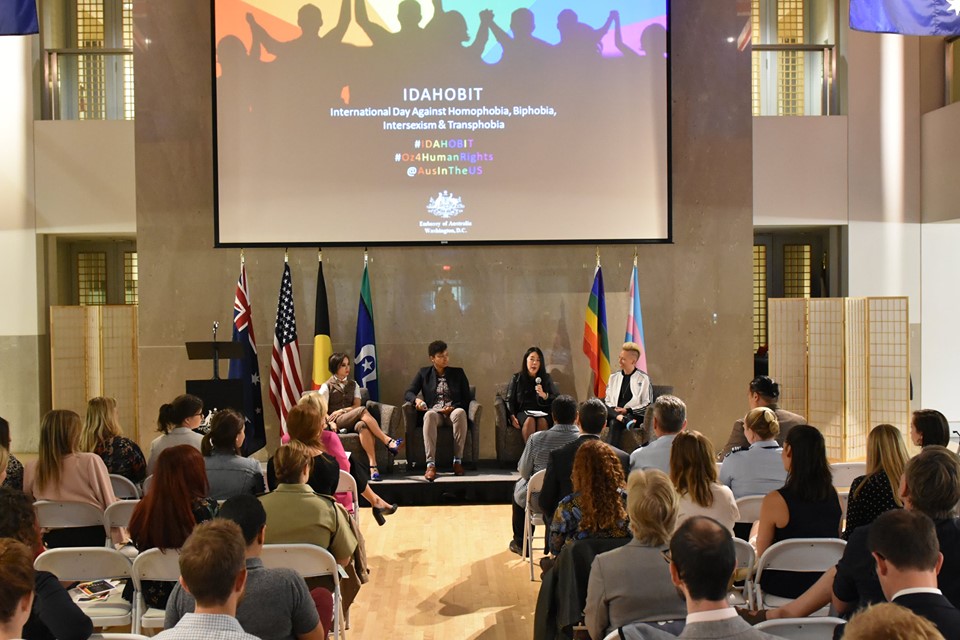
PIP: Do you still play any sports?
AL: I competed in bodybuilding and I’ve always been a competitive athlete. I dropped out for a period of time, then I qualified as a strength and conditioning coach and trained Olympic athletes. I wrote a number of health and fitness books around bodybuilding and weight training.
I think I’m always prone to being a disruptor and changemaker, because now I’m training to compete in competitive shooting, which is an Olympic sport. Walking into this space reminds me of the first time at age 6 when I walked into the bodybuilding community. It’s dominated by white men of a certain age.
When I go to the gun club to train with my trainer and look at competitions, even on a local or national level, I don’t see any Asian faces or Asian female faces. I can’t think of an out professional shooter either, so again I’m having to navigate this space and have this conversation that sports is for everyone regardless of what the sport is. Sports can be much more conservative. We should have this conversation around inclusion and diversity and being LGBTQ in this space in sports.
PIP: Can you discuss the advocacy work you’ve done to help increase LGBTQ and Asian representation?
AL: We’re the only community that has this one-child policy, this conformist community where Asian youth have to conform to be the doctor or the lawyer. We have very unique challenges, because we’re also seen as perpetual immigrants. When you turn on the television, you very rarely see an Asian face, and if you do, it’s always in a doctor or teacher role.
We’re only 1% of Hollywood leading roles. They say now they’ve never had as many LGBTQ characters on TV and film, but then what about the Asian ones? There are very few; you can probably count them on one hand. That becomes problematic with the narrative of being Asian and LGBTQ and what it means.
Even in the LGBTQ community, when you look at the magazines or award galas, they very rarely amplify the Asian voice and very rarely acknowledge the work of Asian activists or other community leaders that support the community. It’s predominantly black and white. That narrative is always there. The “Out 100 List” that Out produces every year — last year, there was not one Asian face. We have 20 million Asian people in the US, and I can count over 50 gay Asian leaders. It’s not good enough to say, “Oh, we couldn’t find someone,” or “We didn’t know.”
How does that narrative play out for an Asian LGBTQ youth who’s struggling with their gender or sexuality? Whenever they turn on TV or look in the press, gay or straight, they never see themselves, so they think that being LGBTQ isn’t for them or isn’t celebrated, because they see this different narrative.
Yes, it’s fantastic you have Laverne Cox and Janet Mock and other out LGBTQ people who are high-profile, and it’s great Jay-Z and Beyonce support the community. But other communities need to stand up for the Asian LGBTQ community and our challenges.
Asian LGBTQ youth suffer the most amounts of bullying out of all ethnic groups; they say at least twice a month they’re bullied by white LGBTQ people. In sports, you see the lowest participation rates in sports, but you see the highest amount of hate. Asian youth in college contemplate suicide more than any other youth group. So then if you look at an Asian LGBTQ group, their suicide rate is probably even higher. If you look at the stats of LGBTQ youth suicide, the Asian narrative isn’t usually in that statistic.
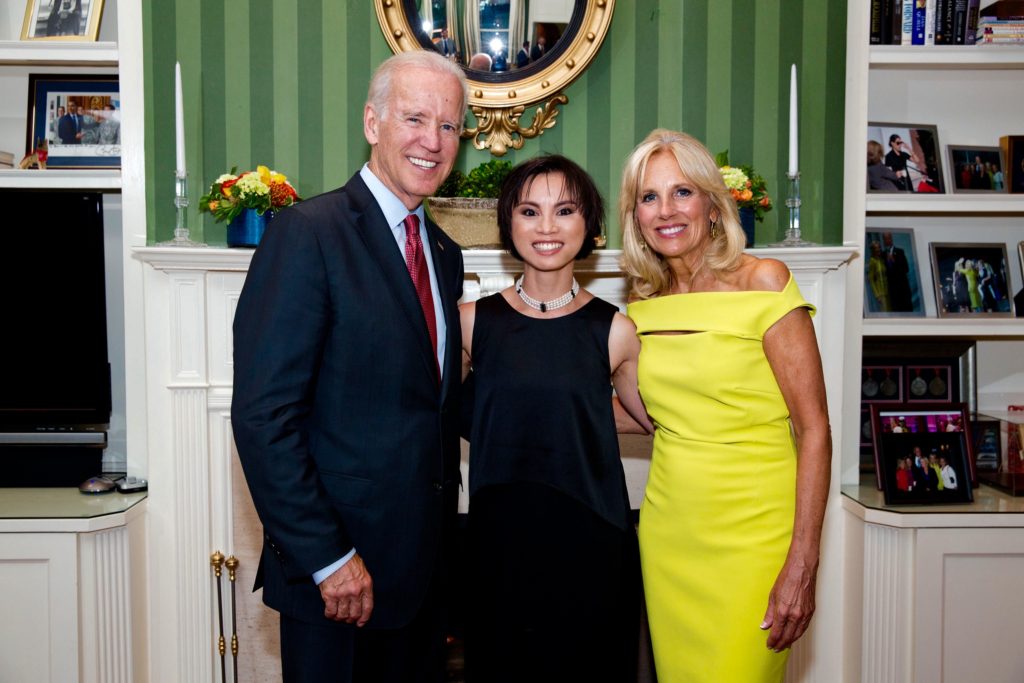
Because for the Asian family, we have to understand the cultural difference of the shame, and the loss of faith and the failure the parents feel, and how they’re disowned in their community when they have an LGBTQ child or when their child commits suicide. The parents don’t want to come forward. White parents of LGBTQ kids who have committed suicide have come forward and discussed this and showed their children’s pictures on television, but they had more access to help and more access to mental health resources and more funding that goes to that community.
If we’re going to change hearts and minds and understand the mechanism of the struggle Asian LGBTQ youth face, you have to first hear our stories. Many Asian people and Asian LGBTQ people are immigrants, so we live within two worlds; our world in the US and our world within Asia, and we could be two different people within those worlds. It’s navigated constantly, and those worlds can’t always meet. It’s a massive burden on a kid’s shoulder or the shoulders of any Asian person regardless of their age.
I think we need to acknowledge the racism within the LGBTQ community against ethnic minority groups. We don’t talk about that enough. I’ve probably received twice as much racism within the LGBTQ community than I do within the straight community. In terms of my advocacy work, I receive three times as much racism within the LGBTQ community, mainly by white LGBTQ people, compared to straight people in my daily interactions.
This is the very reason why I do my advocacy. I’m an adult, I can take it. I shouldn’t have to take it. But then if there’s a 6-year-old Asian LGBTQ youth, they’re not able to take it and they’re struggling to find out who they are, and they’re alone having to deal with discrimination and bullying.
PIP: What are your plans for the future?
AL: Over the next year, I’m having many discussions around bullying and equality, because we’re having these discussions nationally across the US and around the world, but the Asian face isn’t at the table. We’re the most invisible community in the US, and when it comes to professional sports. In the NFL, I can only think of one Asian athlete; it’s pretty much dominated by black and white athletes.
So starting with the May 17 event, I’m bringing the global sports equality tour wherever I am in the US. I’m bringing sports organizations and mayor’s offices together and teaching ways of having these discussions and sharing stories, because it will change hearts and minds and policies around sports and level our unconscious bias when it comes to recruiting athletes. We have to first understand what the challenges and barriers are.
Another part of my work is having a discussion about what it means to be Asian and LGBTQ in society, if that’s in business, if that’s in Hollywood, or if that’s in sports. Many people don’t know about our experience because there’s this narrative we’re this invisible model minority. When you look at LGBTQ Hollywood, it’s only 1% Asian. There’s this assumption that LGBTQ Asian youth aren’t homeless.
We need to understand the mechanism of why it’s so difficult for our community to come out and why it pushes us further into the closet and contemplations of suicide. It doesn’t mean we’re not homeless; we’re just not seen. When it comes to funding for Asian LGBTQ community, we just don’t get funding either because we’re not seen. Even though there are 20 million of us in the Asian community, we’re just not seen as a community that needs help because of this perpetual idea that nothing happens in our community. There’s a lack of statistics there.
So I do a lot work in the entertainment sector and around these conversations of being Asian and LGBTQ and how people can navigate that space to support us. It’s sad the money that’s made from our community — that was seen very well with “Crazy Rich Asians.” In the movie, there was a gay Asian character and the actor is gay, but this is problematic; they placed him in that stereotype of a very flamboyant gay man in fashion.
It’s breaking down those narratives of who we are, and we’re seen as the sidekick LGBTQ friend; we’re not seen as a narrative in the forefront. I think the only place where you somewhat see it normalized is in “Black Lightning” where the black lesbian lead has an Asian girlfriend. That’s the first time I’ve ever seen that on a mainstream television show. I can’t remember anything else previous to that where you see interracial love between a black and Asian woman, and it’s very normalized; they just happen to be gay. That’s a lot of the work I’m doing.
Keep up with Amazin on Twitter (@amazinlethi), Facebook (@amazinlethi), Instagram (@amazinlethi) and www.amazinlethi.com.
